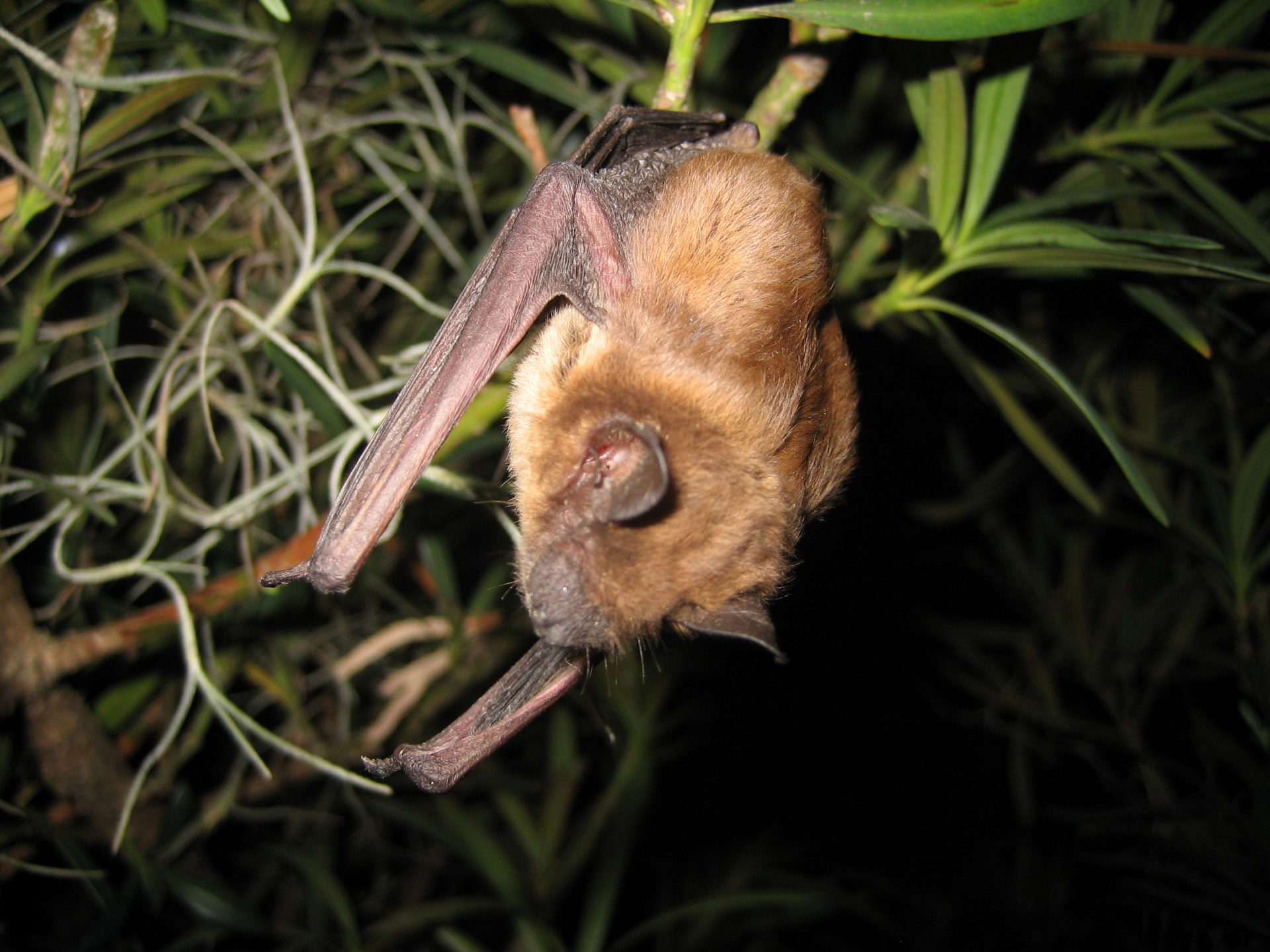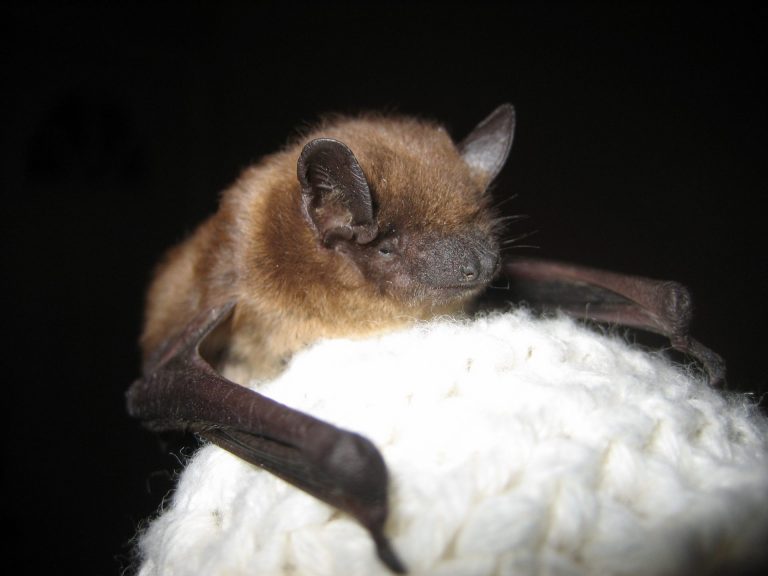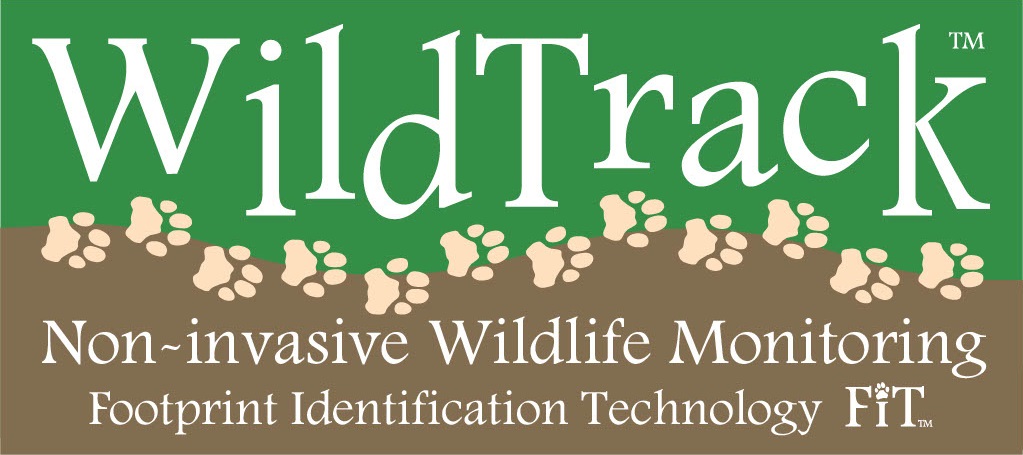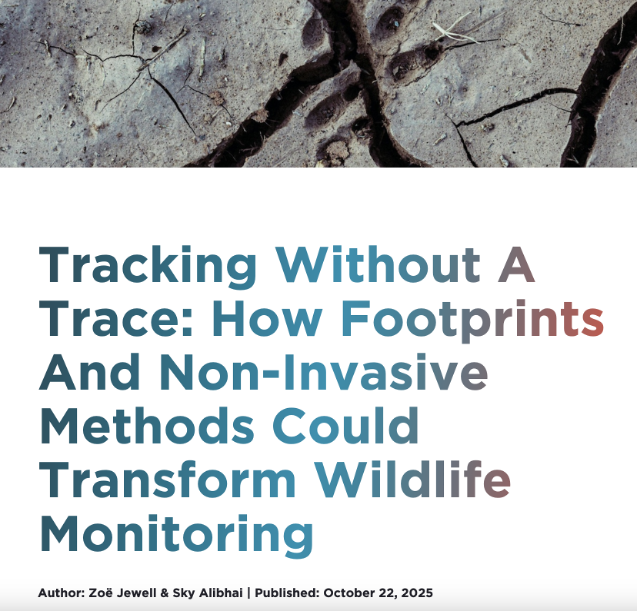Bat Track: Why bats need our help!
All over the world, bats – yes those same bats that pollinate our food, disperse seeds, eat bugs that annoy us – are in deep trouble. A fungal disease, white-nose syndrome, is decimating hibernating bat species in the West.
Often the first contact we have with bats is when we hear noises in our attic. Could it be BATS?! But wait…before you reach for the poison, read this…

The little brown bat (Myotis lucifugus)
——————————————
Laurel Tiel, founder of batpoison.com, is passionate about bats. Here she explains what to do if you find bats in your attic.
Bat control: Why you should avoid using poison
When faced with a bat infestation, it’s tempting to use poison to get rid of it. After all, poison is easy to use and you think it’s going to get the job done. In truth, however, the method is inhumane, ineffective, and it fails to solve the underlying problem.
For starters, poison gives bats a slow and painful death – the animal suffers for a long time before dying. Killing bats is also unethical because the animals are currently endangered. Poison may seem easy to use, but actually, it’s ineffective, often failing to kill all the bats. In addition, you and your pets can be harmed by using poison, as you can ingest tiny parts of it by accident. There’s also a serious risk of disease since you’ll have to manually remove the dead bats from your home.
Besides, bats have such a positive impact on the ecosystem. They are important pollinators and keep nuisance bug populations down. Many bats consume mosquitos, thus controlling the mosquito population in your very own backyard.
Lastly, poisoning bats is illegal. To prevent bats from the cruel fate of poison, and to help prevent extinction, many states have outright made the use of poison to kill bats.
But then what can you do if you have bats in the attic? You can visit batpoison.com to learn more about alternative and more effective measures.
Humane Bat Removal Methods

There are many ways to remove bats without poison. Here are some of the most humane and effective methods:
Prevention
Prevention is the best way to avoid a bat infestation. This method is easy and only needs a bit of time.
The first step to prevention is to inspect your home and find all the entries bats can use. This might be a hole in your roof, rotting walls, or an exposed chimney. You should then seal all of these with the right material.
You can also clear your yard of garbage to remove insects and the bats who prey on them. By doing some cleanup and maintenance, you can prevent bats from ever bothering you.
Exclusion
If you already have bats, exclusion is a good option because it lets the bats leave on their own, making it humane and straight-forward. Like prevention, you should inspect your home for entries the bats might use. Instead of permanently sealing them, however, you should install one-way doors. These allow the bats to leave your home and go hunting, but it will stop them from getting back inside. Over time, you’ll see the bat infestation getting smaller and smaller until it just disappears. Then you only have to clean up the area and permanently seal the entries.
Just be careful when using this method. Baby bats can be stranded from their parents if you use this approach during the wrong time of year. That’s why you should not exclude bats during the maternity season.
Professional Bat Removal
There are a lot of certified bat removal companies out there, and they can humanely remove the bat for you. This is often the easiest approach, as it requires the least amount of time and guarantees the best results. The Humane Society has a list of recommended professionals.
So let’s Bat-Track!
You can help monitor and protect bats! If you’re a bird watcher, you’re all set. Bat monitoring is a lot like bird watching. This activity gathers important data — like the number and species of bats in an area — and provides them to scientific organizations.
Scientists then use the information to understand bat migration patterns, and they help bats recover from their status as endangered animals.
What are the first steps?
There are many ways to get into bat monitoring so that you can help bats thrive. You can contact the North American Bat Monitoring Program or Bat Conservation International about volunteer opportunities, or more information.
Here are some of the easiest and most non-invasive methods:
Counting Bat Roosts:
Counting bat roosts tells scientists how many colonies are in an area. It’s done by seeing where bats go after a night of hunting.
Bat Counting:
It can sometimes be helpful to count the number of bats in an area or colony. This is often done with cameras that take pictures of incoming and outgoing bats, which can be tallied up to get a good estimate.
Audio Recordings:
Different bat species use different frequencies to communicate and echolocate. By placing special devices near colonies, you can let scientists know what bat species are in the area.






